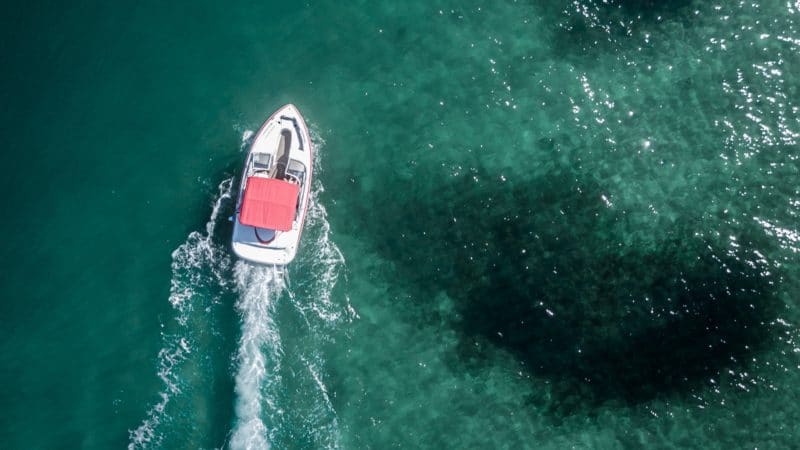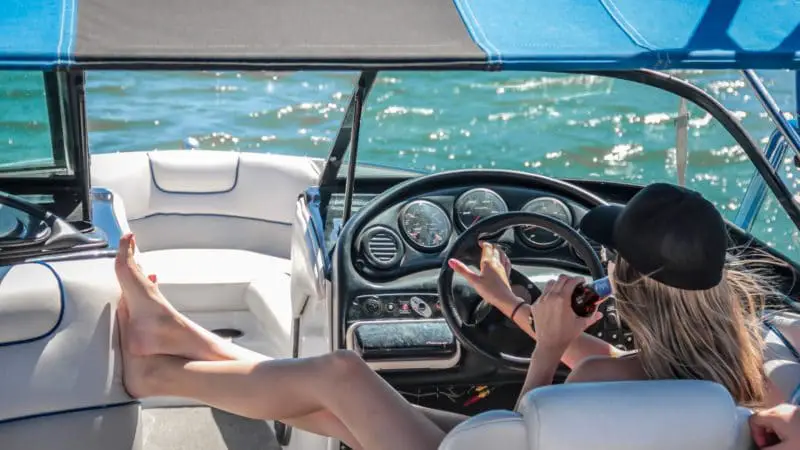Know the regulations on marine boat toilets

Pleasure boats equipped with marine toilets are subject to precise and strict legislation. Whatever their models or sizes, they must respect regulations on marine toilets. In this article, we present the obligations and requirements defined by this regulation. Thus, you will know what measures to take to avoid any sanction or penalty.
What is a marine toilet for a boat?
The marine toilet is a piece of equipment designed to receive and evacuate the droppings of the occupants of a boat. Like a domestic toilet, it consists of a bowl that allows users to sit or squat. The only difference is at the level of the tank. If the domestic toilet discharges its contents directly into the ground, the boat toilet is equipped with a tank in which the droppings are collected. In addition, in addition to their primary utility, boat toilets can add a touch of modernity and design to the craft.
What are the different types of marine toilets?
The manual marine toilet
Manual toilets are a basic waste management solution. Here, the rinsing of the bowl is carried out by means of a manual pump. This means that whenever you will use the manual marine toilet, you will have to pump water to evacuate the droppings. Fixedly installed, they are connected to a clean water tank, as well as to a black water tank. However, there are models capable of taking water directly from the sea.
It should be noted that manual marine toilets are divided into two main categories: classic marine toilets and compact marine toilets. They work the same way, but compacts are designed for small spaces:
In the classic range, these three manual marine toilets are recommended:
- See the Albin Pump manual marine toilet
- See the Osculati manual marine toilet
- View Johnson's Manual Marine Toilet
Electric marine toilet
Electric toilets work on the same principle as manual ones. They are also fixedly installed and connected to tanks. The difference between Manual marine toilet and electric marine toilet is located at the level of the water filling and draining system. Unlike manual models, the water is filled and emptied there using a 12V or 24V electric pump. Just press a button and the pump starts automatically. Practical and comfortable, this type of toilet is very often equipped with a macerator or a grinder, thus offering the possibility of using pipes of smaller diameter at the outlet.
There are four main categories of electric marine toilets operating on the same principle:
Compacts designed for small spaces:
- see the Albin Pump compact electric marine toilet
- see the Lalizas LT-0E compact electric marine toilet
- see the Osculati compact electric marine toilet
The classics you should already know:
- See the classic Albin Pump electric marine toilet
- See the Lalizas LT-1E Classic Electric Marine Toilet
- See the classic Osculati electric marine toilet
- See the classic Jabsco electric marine toilet
- See the Johnson Classic Electric Marine Toilet
Top of the range for maximum comfort:
- See the Albin Pump 12V premium electric marine toilet
- See the Albin Pump 24V premium electric marine toilet
- See the Osculati 12V high-end electric marine toilet
- See the Osculati 24V high-end electric marine toilet
The high-end compacts to combine comfort and small spaces:
- See the Albin Pump compact premium electric marine toilet
- See the Osculati compact high-end electric marine toilet
- See the Jabsco compact premium electric marine toilet
The chemical toilet
Chemical toilets are the most practical solution for small boats, as they require little space. The point is that this type of toilet does not require a connection to a black water tank or clean water. They are removable and equipped with a built-in tank, so they can be moved on board. However, they are less comfortable than the others. In addition, the limited black water and clean water capacity restricts its use to short outings and at anchor (with increasingly strict regulations on marine toilets).
You will find chemical toilets at all prices, from the most basic to that with an electric flush!
- See a rudimentary portable chemical toilet
- See a classic DOMETIC portable chemical toilet
- See Thetford high-end portable chemical toilets
To learn more about all these brands of chemical, manual and electric marine toilets, you can read our comparison of marine toilets.
What are the regulations on marine toilets?
Article 43 of the Water Law is clear with regard to regulations on marine toilets. It states:
"Pleasure craft, equipped with toilets and built after January 1, 2008, which access sea and river ports as well as mooring areas and light equipment are fitted with installations allowing either to store or to treat sewage from these toilets. "
In addition, the legislation on marine toilets depends on the obligations and requirements related to the treatment and discharge of wastewater. In this regard, rule 11 of decree n ° 2010-477 of 11 May 2010 publishing resolution MEPC.115 (51) (annex 5) relating to the adoption of amendments to the annex to the 1978 protocol relating to to the 1973 International Convention for the Prevention of Pollution from Ships (Revised Annex IV of MARPOL 73/78), adopted in London on April 1, 2004, states:
"Subject to the provisions of rule 3 of this Annex, the discharge of waste water into the sea is prohibited unless the following conditions are met ..."
(We have reworded the following statement so that it can be better understood)
These conditions are as follows:
Wastewater discharged must be crushed and disinfected using a device complying with the provisions of regulation 9.1.2 of this Annex. During this rejection, the boat must be at a distance of more than three nautical miles from the nearest coast. And if the discharged wastewater is not crushed and not disinfected, the boat should be at a distance of more than twelve nautical miles from the coast. In all cases, whatever the nature of the wastewater, the discharge must take place during a journey and not on site. The discharge will therefore be done gradually and at moderate speed, that is to say less than or equal to 4 knots. Finally, the effluent must not leave visible floating solids in the surrounding water, nor cause discoloration. Regarding the rejection rate approved by the authority, it is set according to the standards defined by the organization.
The device used for the treatment of waste water must be approved by the authority, on the basis of the operating rules referred to in regulation 9.1.1 of this Annex. On the other hand, the results of the testing of the device used must be reported in the International Wastewater Pollution Prevention Certificate.
What to remember from the legislation on marine toilets
In conclusion, just remember that the legislation on marine toilets depends on the laws and standards that govern the treatment and discharge of wastewater from ships. It is therefore :
- Mandatory to have its marine toilets connected to a wastewater storage system (a black water tank) or to a wastewater treatment mechanism in accordance with the legislation.
- It is forbidden to discharge this black water into the sea unless:
- They are crushed and disinfected in accordance with the rules in force.
- The vessel is more than three nautical miles from the nearest coast. (Or more than twelve nautical miles from the coast if the discharged wastewater is uncrushed and uninfected)
- The discharge must be carried out during a trip and not on site in a progressive manner and at moderate speed, that is to say less than or equal to 4 knots.
- The effluent must not leave visible floating solids in the surrounding water or cause discoloration.
Therefore, if you have a chemical toilet you will have to wait until you are at the port to empty it. If you have a manual or electric marine toilet, it must be connected to a black water tank and a macerator:
- See a vertical black water tank (it allows emptying by gravity and avoids using a pump).
- Voir rectangular black water tanks - from 50 to 200 L (those are the most common)
- See truncated black water tanks - from 50 to 100 L (to save space if your hold allows it)
Note that if the macerator is not integrated into your marine toilet, you can buy a black water tank with macerator. They are compatible with all electric and manual marine toilets:
- See a horizontal black water tank of 60L and 24 V
- See a horizontal black water tank of 70L and 12 V
- See a 72L and 24V vertical black water tank
- See a horizontal black water tank of 80L and 12 V
- See a horizontal black water tank of 91L and 12 V
- See a horizontal black water tank of 91L and 24 V
- See a 112L and 24V vertical black water tank
Also remember to equip yourself withan evacuation pipe to connect the waste water tank to the marine toilet.
In addition, to know exactly when to drain, install a gauge specially adapted to black water tanks such as the osculati kit. It includes a meter and a probe with universal attachment for tank height from 15 to 55 cm (the sensors of the probe must be cut according to the height of the tank used.) You may need a universal joint for the probe if it is not supplied with your tank.
Finally, to avoid bad odors coming from the black water tank, we recommend the installation of a odor filter.
Finally, it is necessary to regularly use in the black water tank of the YACHTICON Purysan Ultra. It prevents the formation of unpleasant odors and breaks down feces and toilet paper. It is also recommended to clean the black water tank at least once a year before wintering. At this time, use YACHTICON Puryclean to clean and disinfect the waste water tank.
Learn more about marine toilets, chemical toilets and black water tanks:
GUIDE: What are the best inexpensive marine toilets?
How to drain a marine toilet on a boat?
MAINTENANCE: Cleaning a black water tank for boats
[GUIDE] Comparison of marine toilets for boats and sailboats

